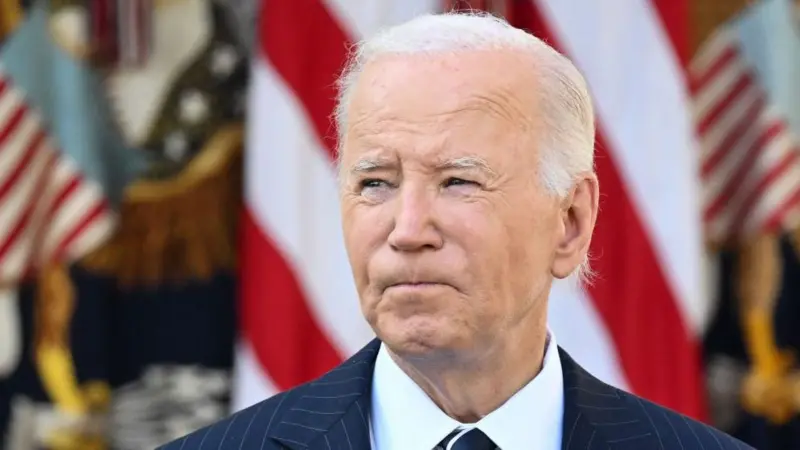
Missile Strikes and Deadly Storms: How Cascading Crises Engulfed Biden’s Final Months as President
As President Joe Biden approaches the twilight of his administration, the final months of his presidency have been anything but a quiet fade. Instead, they have been marked by a relentless series of crises: international missile strikes and catastrophic natural disasters. Together, these events have not only cast a pall over Biden’s remaining days in office but have stirred divisive debates across political and social lines about the efficacy of his leadership and the state of American readiness for an era of “cascading crises.”
The Diplomatic Maelstrom: The Missile Crises
It began with the escalating tensions in Eastern Europe, as a fragile ceasefire between Russia and Ukraine was shattered by renewed missile attacks. NATO allies, wary of direct involvement, looked to Washington for leadership, and Biden’s response was a cautious one. However, critics on both sides of the aisle claim that his approach was an ineffective middle ground—too aggressive to satisfy those seeking peace but too timid for advocates of military intervention. His decision to send additional military aid while holding back American forces has led to polarized reactions; some praise it as restraint, while others see it as an abdication of responsibility.
Even more controversial was Biden’s handling of escalating hostilities in the Middle East. As Iran resumed its nuclear enrichment programs at an accelerated pace, regional tensions flared into open conflict, with missile strikes exchanged between Iran and Israel. Biden’s administration responded by sending arms shipments to Israel, while re-issuing sanctions on Iran. But in trying to reassert American influence in the Middle East, Biden faced growing backlash from both progressives and conservatives at home. For the left, his decisions revived uncomfortable comparisons to the “forever wars” in Iraq and Afghanistan, while the right criticized Biden’s measures as insufficient and reactive.
Environmental Catastrophe: Storms of the Century
While Biden grappled with foreign conflicts, his administration was hit by a series of unprecedented natural disasters that many link to climate change. From a devastating hurricane season along the Gulf Coast to unprecedented wildfires sweeping the West, each disaster has overwhelmed local authorities, strained federal resources, and left citizens disillusioned with the government’s response.
For a president who has placed climate action at the heart of his domestic agenda, these disasters seem to underscore the limits of even the most ambitious green policies. While Biden attempted to address these issues by invoking federal emergency powers, his administration’s handling of relief and recovery efforts drew sharp criticism. In Florida, where a record-breaking hurricane displaced thousands, overwhelmed relief efforts led to delayed responses and uneven aid distribution. These mishandled crises gave new ammunition to Biden’s detractors, who argue that his administration’s climate policies are too little, too late.
Even within his own party, Biden’s response has spurred controversy. Some progressives view these disasters as proof that the president has been too slow to act on climate change. For them, the recent storms are evidence that America’s infrastructure and environmental protections are still dangerously insufficient. Meanwhile, conservatives have blamed Biden’s climate policies for everything from energy shortages to the rising costs of food and housing, arguing that the administration’s response to climate issues has made life harder for average Americans without mitigating the impacts of extreme weather.
The Economic and Humanitarian Fallout
The simultaneous onslaught of geopolitical and environmental crises has also had dire economic repercussions. The administration has been forced to funnel billions of dollars into foreign aid, military support, and disaster relief at a time when the economy is teetering on the edge of a recession. As inflation remains stubbornly high, many Americans are feeling the financial strain, and public opinion is swinging further against the administration. Critics argue that Biden’s foreign policy choices, combined with his domestic spending priorities, have placed undue strain on an economy still reeling from the pandemic.
In border states and coastal areas, humanitarian crises are exacerbated as displaced populations struggle to find shelter and resources. With thousands evacuated from storm-ravaged areas, housing and public infrastructure systems are nearing breaking points, putting pressure on FEMA and state-level agencies. The humanitarian aspect of these crises—the displaced families, disrupted lives, and growing homeless populations—has only heightened discontent, making Biden’s final months even more politically fraught.
A Divisive Legacy on the Brink
As Biden’s term nears its end, the impact of these “cascading crises” could shape his legacy in ways few might have anticipated. To some, these crises paint a picture of a president overwhelmed by a chaotic global stage and unforeseen natural disasters. Critics accuse Biden of neglecting national priorities in favor of international engagements, arguing that his administration has struggled to pivot effectively between domestic issues and foreign affairs.
On the other hand, Biden’s supporters argue that these crises are emblematic of the new global and environmental reality, one that will inevitably demand more complex leadership than ever before. They claim that Biden, though imperfect, has shown a measured and realistic approach to a world filled with unprecedented challenges. These defenders point to his investments in renewable energy, infrastructure upgrades, and international alliances as critical steps forward, despite the setbacks.
Conclusion: A Fractured Future?
For the United States, Biden’s final months in office underscore a future shaped by the convergence of international conflict, climate disasters, and economic upheaval—a complex landscape with no simple solutions. Whether or not Biden’s approach ultimately succeeds, his administration’s final act has exposed both the strengths and vulnerabilities of America’s approach to a new era of global complexity.
As the dust settles on Biden’s legacy, the debate will rage on. Was he a leader out of his depth, trying to juggle insurmountable crises? Or was he the pragmatist America needed, laying the groundwork for the challenges ahead? Only time will tell, but one thing is clear: Biden’s presidency has been tested in ways few could have foreseen, and the consequences of his decisions—good and bad—will ripple well beyond his time in office.






